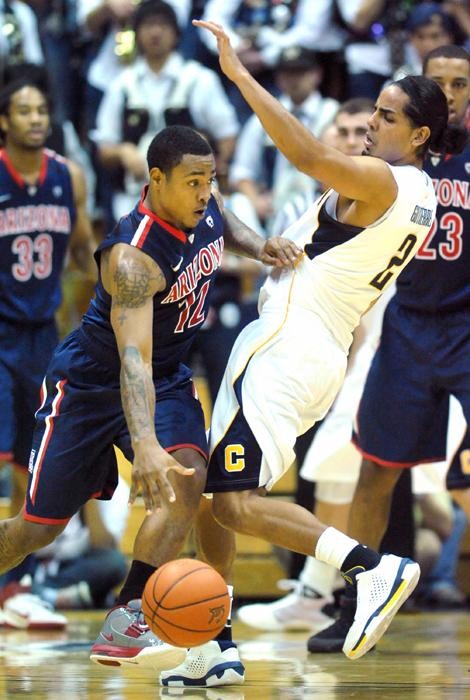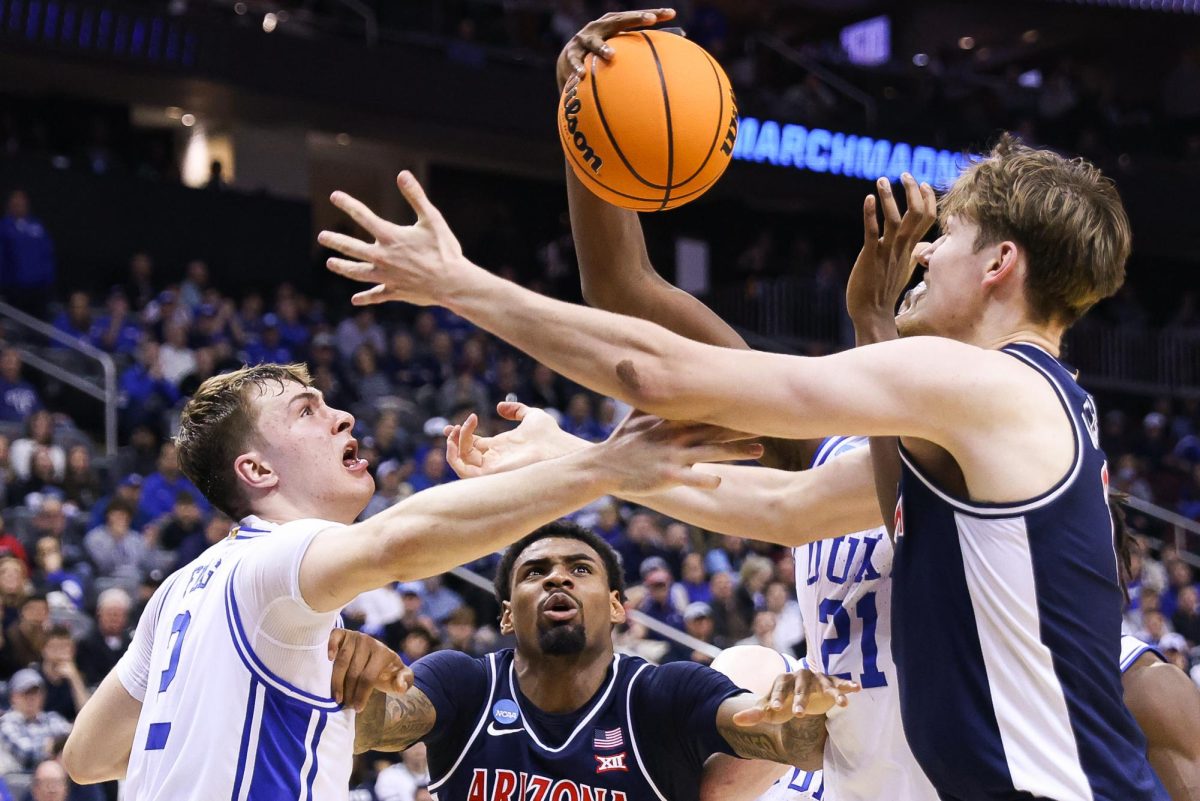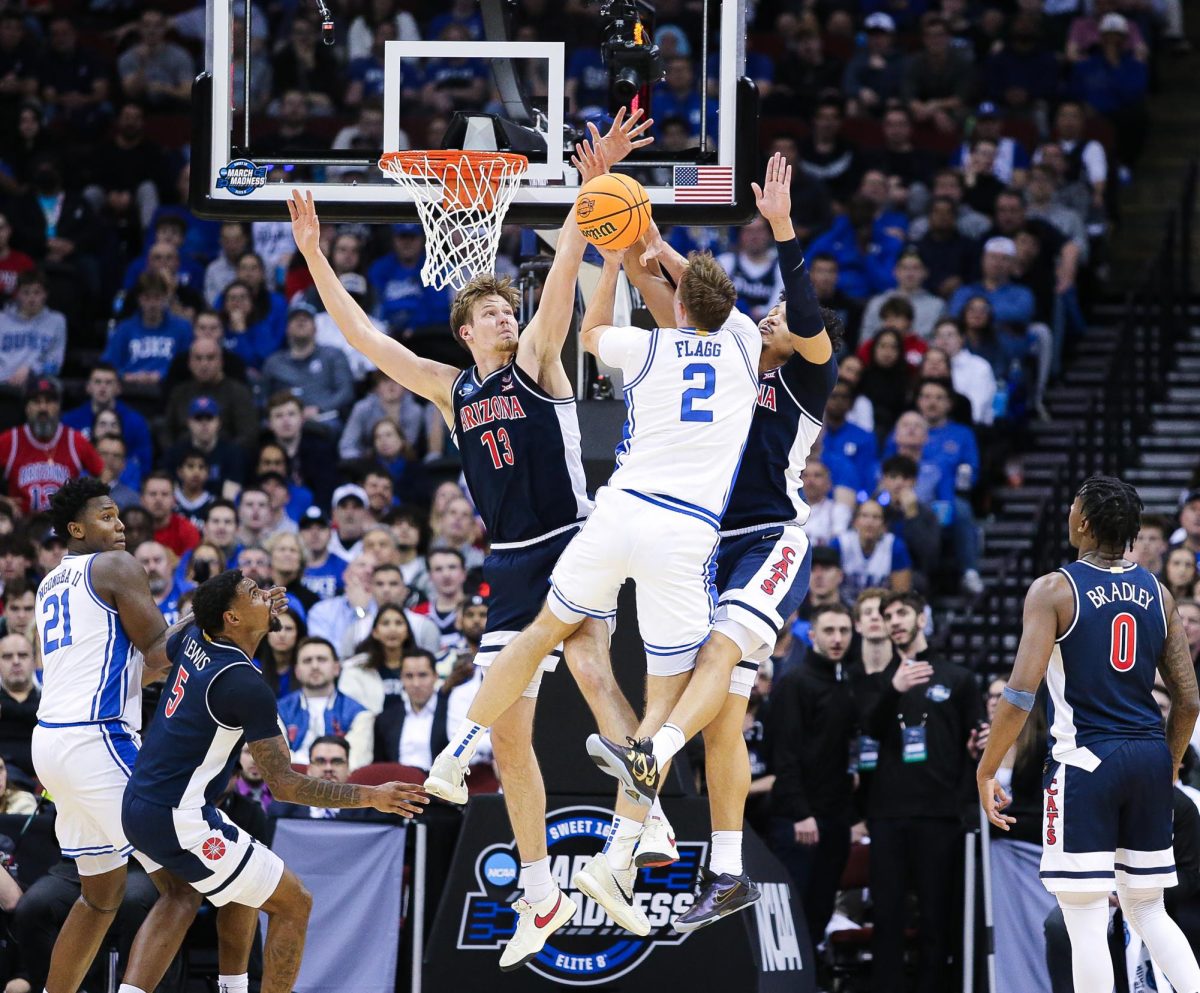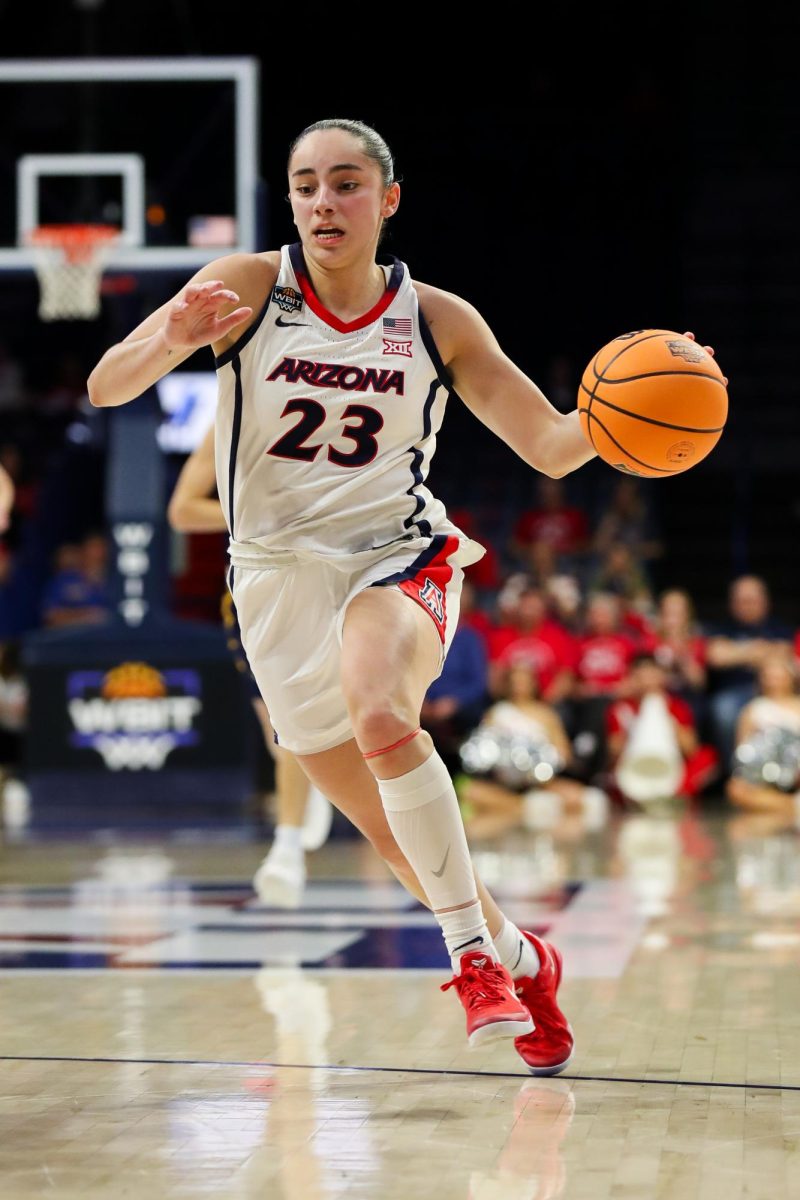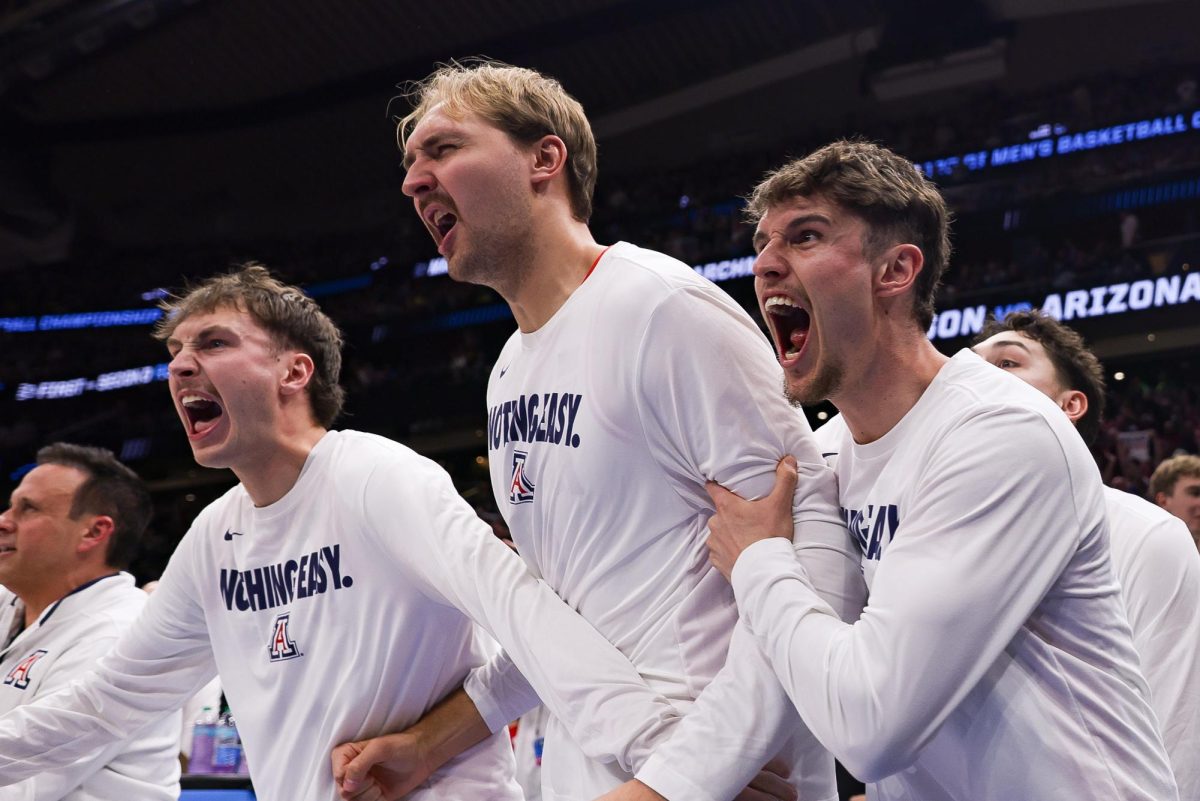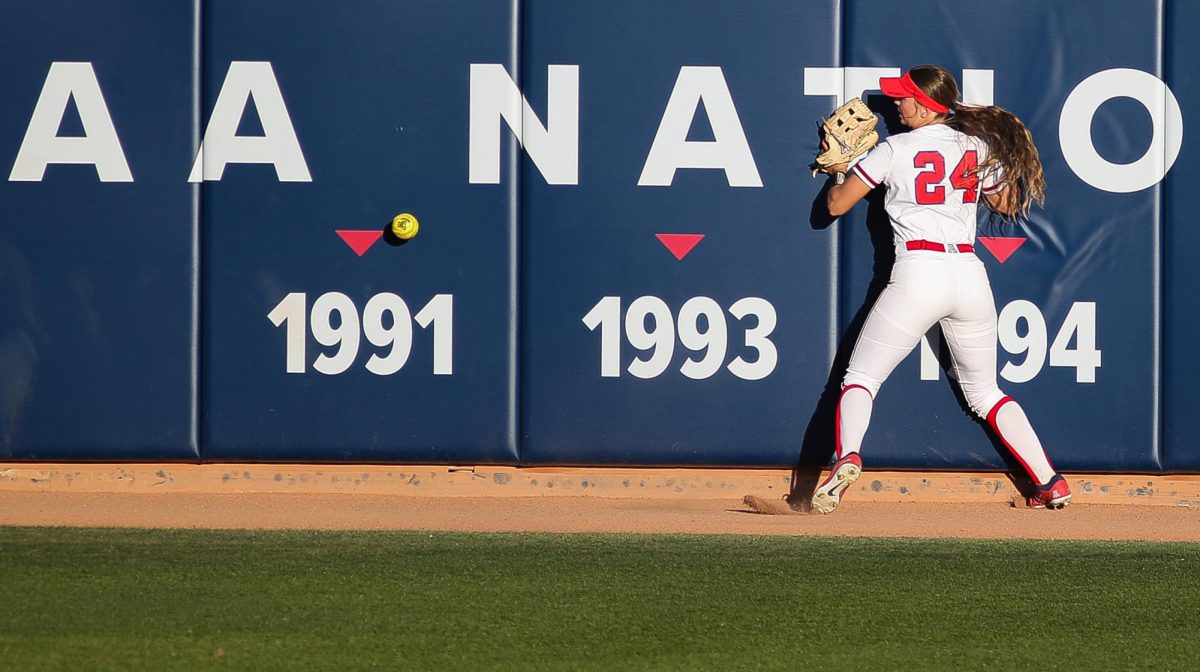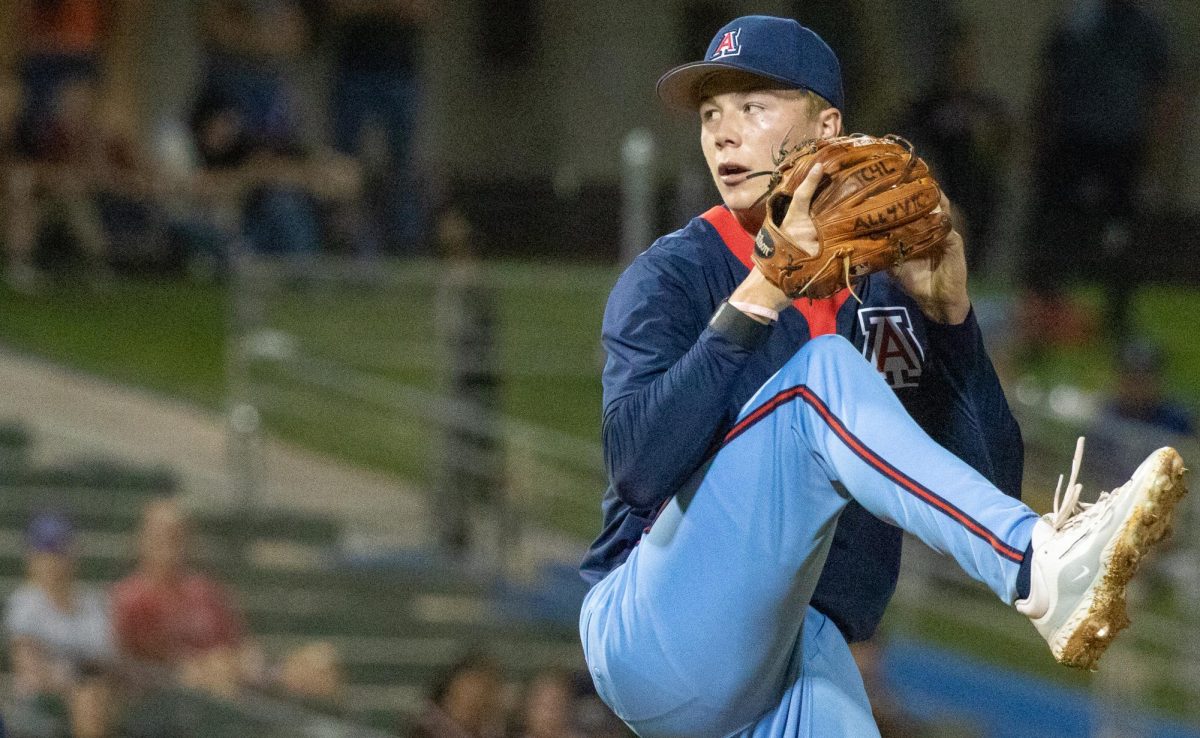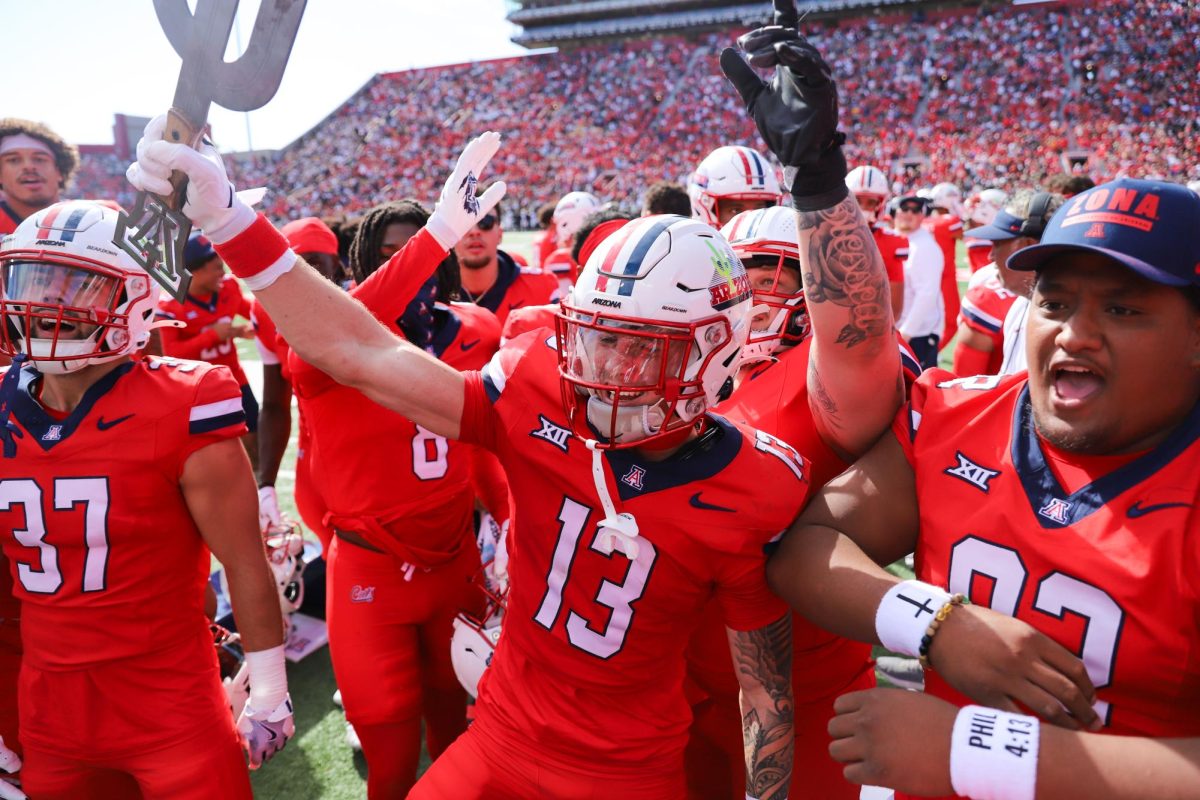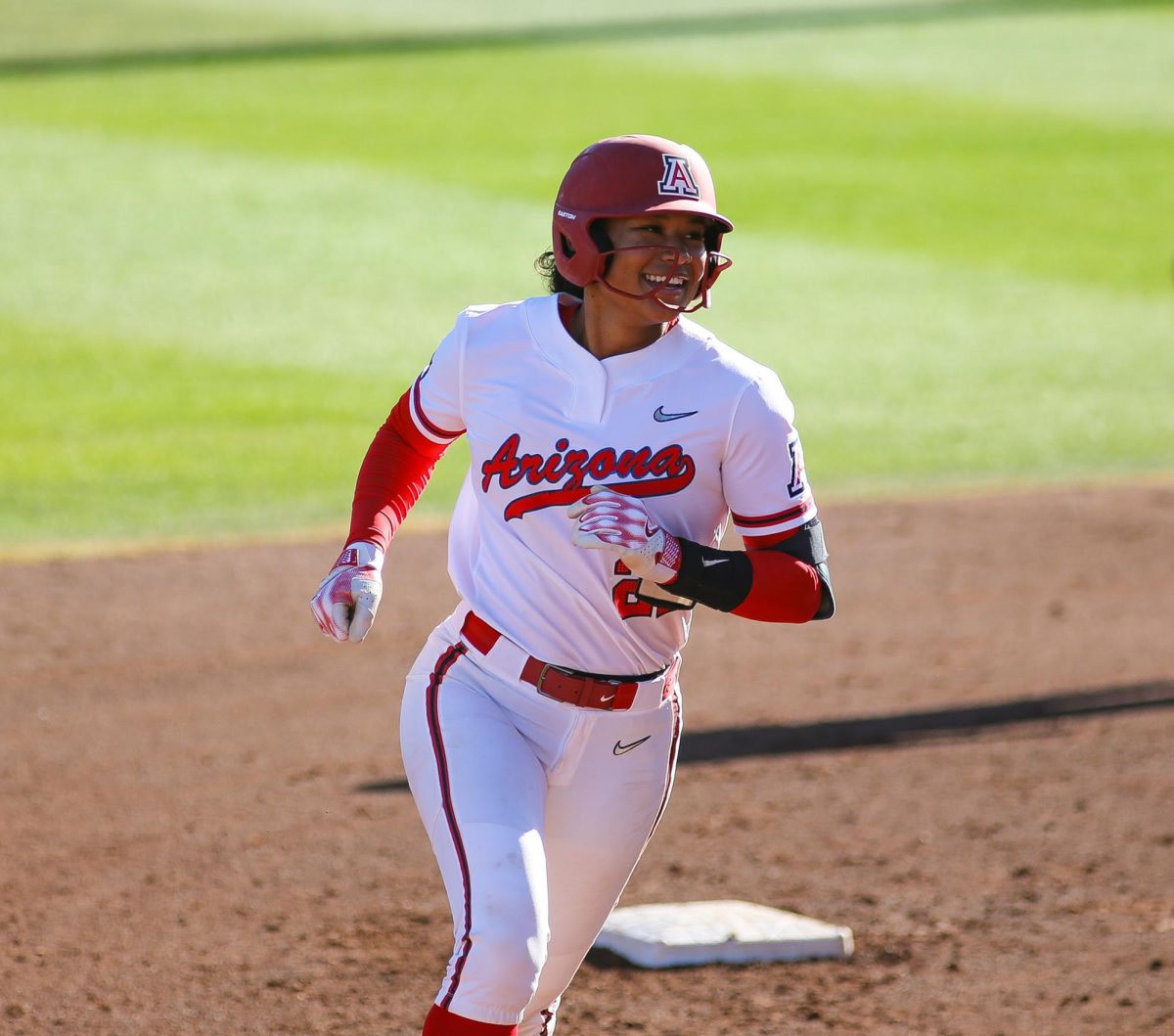Gone was the tentativeness, the mind-boggling decisions and the heaviness growing among critics that point guard Momo Jones could possibly slip into anonymity if he didn’t get his act together.
Back was the tenacity, the hard-nosed drives to the hoop and the clutch shots that are so easily imprinted on our minds 20 years down the road, when we reminisce about Arizona basketball.
There were two plays in Arizona’s 107-105 victory at California on Saturday that lent evidence that there’s more to Jones than the ballplayer who fails to record the bunches of assists Arizona fans have unfairly expected.
Two months ago, Sean Miller fielded questions about the Harlem-bred Jones, many of which concerned his abilities to run the team. The head coach made no big deal of Jones’ struggles with turnovers, nor his box scores dry of assists, nor his tentativeness.
Just as his freshman year progressed, Miller believed Jones would find himself halfway through the conference schedule of his sophomore season, finding a groove as a starting point guard just as he did as the back up to Nic Wise.
Right again, Mr. Miller.
Jones is not going to be Mustafa Shakur, an all-around talent absent of a killer instinct. Nor would he become Jerryd Bayless, a freak athlete with an angry brand of offensive basketball. And Jones wasn’t going to be his predecessor, Wise, a crafty ball-handler that won with his slickness.
Maybe he’s bled the meaning from his consistent “”I’m from Harlem”” mantra and forgotten to play like he was back at Rucker Park. Because to be successful, Momo had to realize he needed to be Momo — straight out of Harlem.
Play with passion. Don’t turn the ball over. Direct an offense.
That’s Jones, and that’s what he’s done for the past four games.
It was Jones’ two 17-point games last week and correlating Pacific 10 Conference Player of the Week award that were the beginning of proving doubters wrong — you know, those who said he wasn’t a point guard.
Seemingly, Jones learned the epic quandary of point guard play — when to set up the offense and run it, and when to take it upon himself to score. This weekend, Jones had it.
With 16 seconds left in regulation and his Wildcats down by three, it was Jones flying to the right side of the basket at full speed and using his patented floater over Cal big man Mark Sanders-Frison, the forward nudging him and picking up a foul.
And-1. Made free throw. Defensive stop. First overtime.
Down three points in the second overtime with seven seconds left, Jones crossed over the Golden Bear defender, drove left and pulled up, feet square, atop the key for a 3-pointer to tie the game. A cold-hearted hit.
Both his 3-point plays were further proof that last season’s game-winning shot at Stanford wasn’t an anomaly. He lives for the bright lights and big shots.
Jones still has room to grow. In the first overtime, he took an out-of-rhythm 3-pointer in trying to win the game at the buzzer. Lesson learned, and luckily Jones had another overtime to shine. Yes, still a sophomore, there’s bound to be a bump or two in the road for Jones, who will continue to take the criticism of being a scorer and not true lead guard.
But this we do know: to measure success, expectations must rest on Jones being who he is, not a conception of any other point guard from Arizona’s past.
— Kevin Zimmerman is a journalism senior. He can be reached at sports@wildcat.arizona.edu.



